Affiliate links on Android Authority may earn us a commission. Learn more.
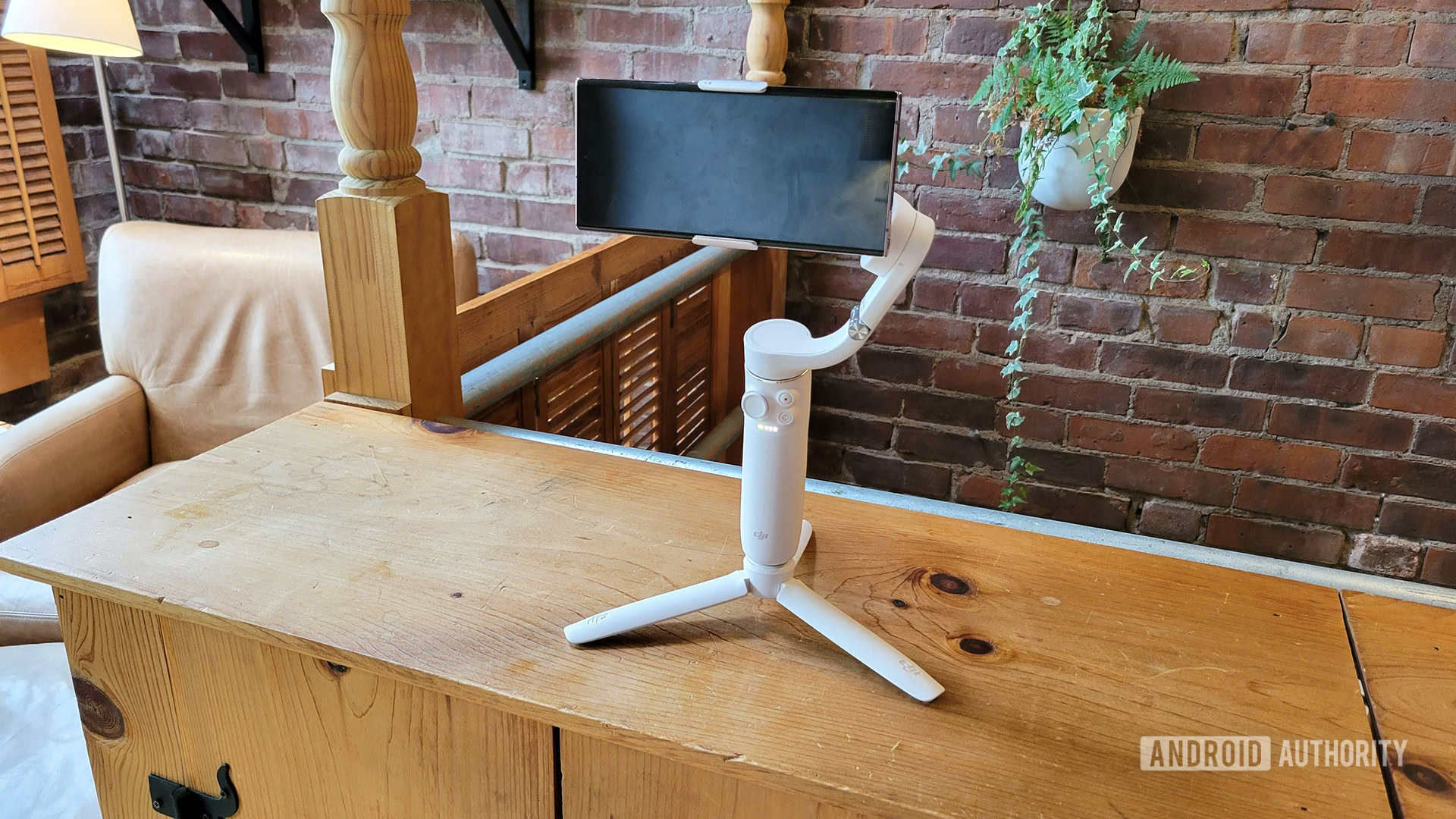


DJI OM 5
What we like
What we don't like

DJI OM 5
DJI creates some of the very best smartphone gimbals. Ever since the first DJI Osmo Mobile in 2017, the company has churned out gimbals that get better and better each year, with the DJI OM 5 being the flagship of 2021.
However, the price seems to go up annually for DJI’s gimbals, with 2021’s product being more expensive than all previous models. Are the new bells and whistles of the latest smartphone gimbal worth the ballooning costs? We’ll give you everything you need to know in this DJI OM 5 review.
What you need to know about the DJI OM 5
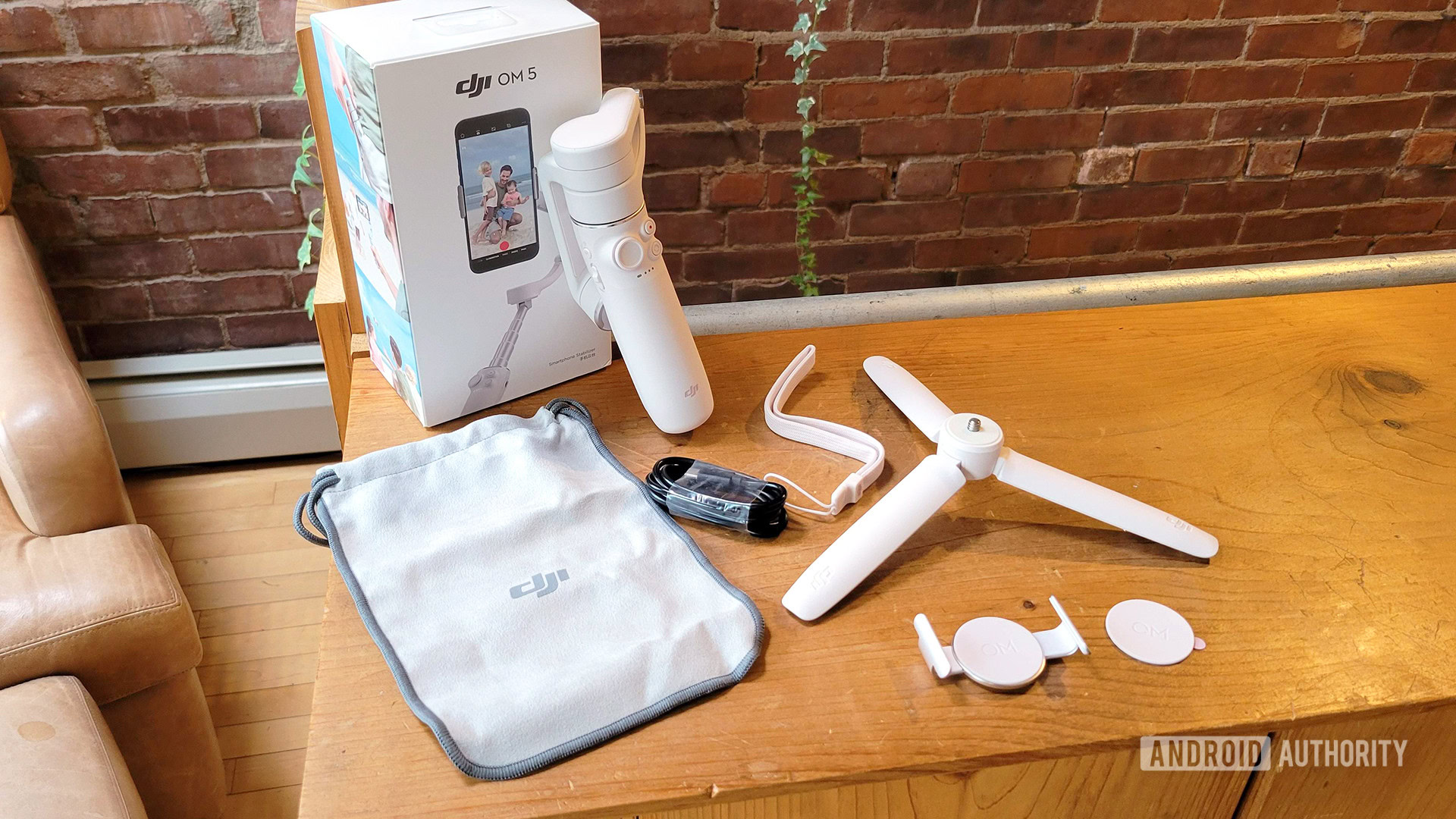
- DJI OM 5: $159 / £139 / €159
If you are unfamiliar with smartphone gimbals, the point of these products is to help you shoot ultra-smooth videos with your phone. The three-axis mechanical stabilizer on a device like the DJI OM 5 keeps your phone locked in place even as you walk, run, or otherwise move around.
For the first time in the line, the DJI OM 5 includes an extendable arm, which allows the device to act like a selfie stick. This brings some welcome versatility. Even with this new feature, the OM 5 still folds up and is also the smallest and lightest device in DJI’s lineup.
As with 2020’s DJI OM 4, the 2021 version of the product uses a magnetic mounting system. This allows you to snap your smartphone on or off the gimbal without recalibrating it each time. We’ll talk more about the mounting system later.
Inside the retail box of the DJI OM 5, you’ll find the gimbal, the magnetic clamp, a removable wrist strap, a USB-C charging cable, a tripod stand, and a carrying bag. The product comes in two colors: Sunset White (used in this review) and Athens Gray. Do note that even though DJI calls it “Sunset White,” the product is basically a very pale pink. See the images above for reference.
There is also an optional accessory called the Light Clamp. This adds a key light to the sides of the magnetic mount, helping you get well-lit selfie footage. This does not come in the retail box and must be purchased separately for $59.
DJI OM 5 vs OM 4: What’s the difference?
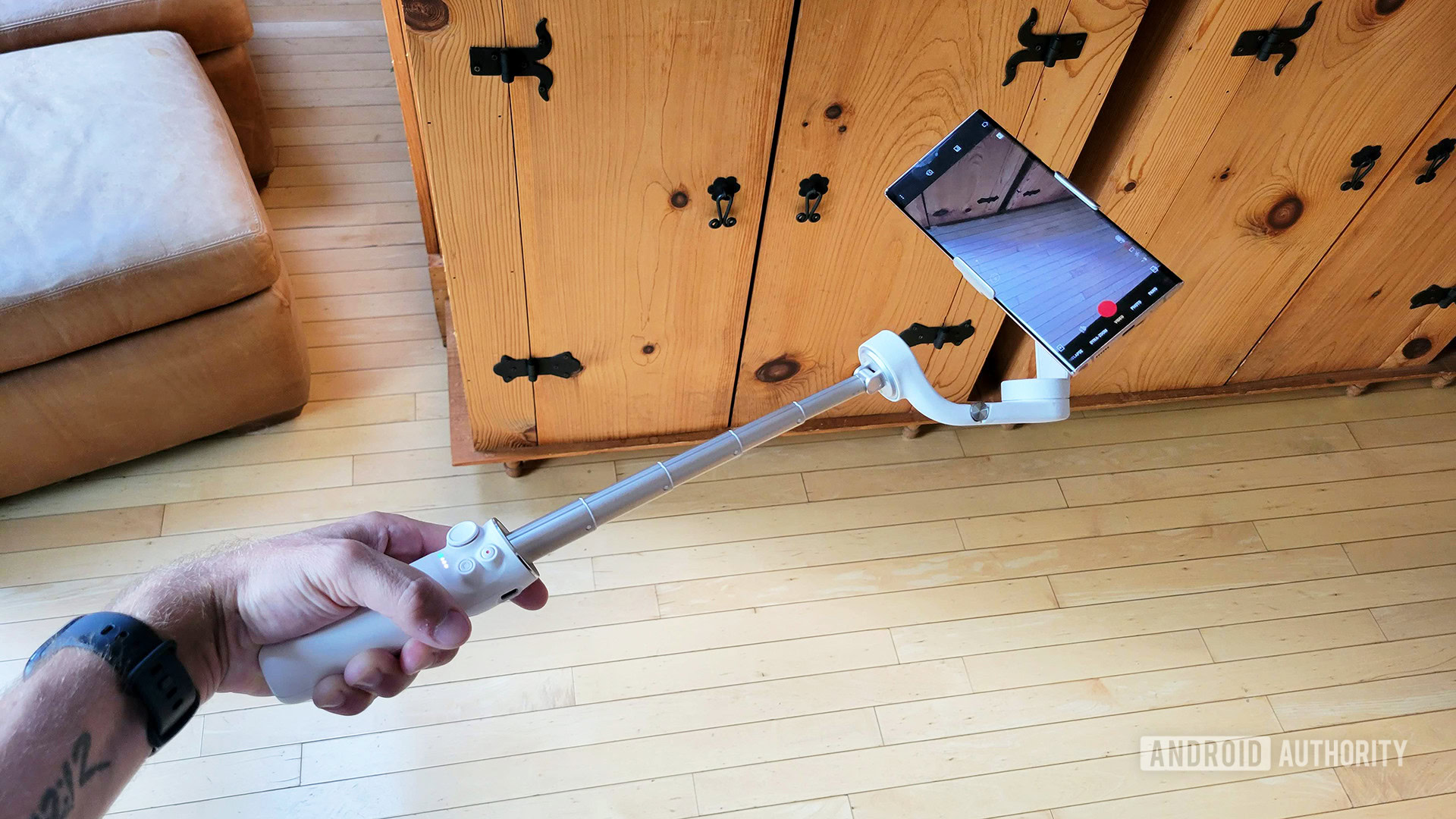
There are five main differences between the DJI OM 5 and 2020’s DJI OM 4:
- Smaller and lighter: The OM 5 is smaller and lighter than any previous OM gimbal. It weighs just 297g (without the tripod stand or clamp attached) and is about a third of the size of the OM 4 when folded.
- Redesigned arm: DJI has completely overhauled the way the device folds up, which is what helps make it smaller.
- Extendable arm: We’ve seen built-in extendable arms in other gimbals, but this is the first time we’ve seen it on a DJI product. The arm extends out 215mm (or about 8.4 inches).
- New software features: A new feature within the DJI Mimo app is called Shot Guides, which, as the name suggests, gives you tips on how to create cool shots. There’s also a new upgrade to Active Track and a few other tweaks that we’ll discuss more in-depth later.
- New color: DJI’s gimbals usually come in just one color, which has been a neutral gray over the past few years. Now, though, Sunset White is thrown in the mix as an option.
Other than those four items, the DJI OM 5 will function similarly to the 2020 version.
How is the new DJI OM 5 design?
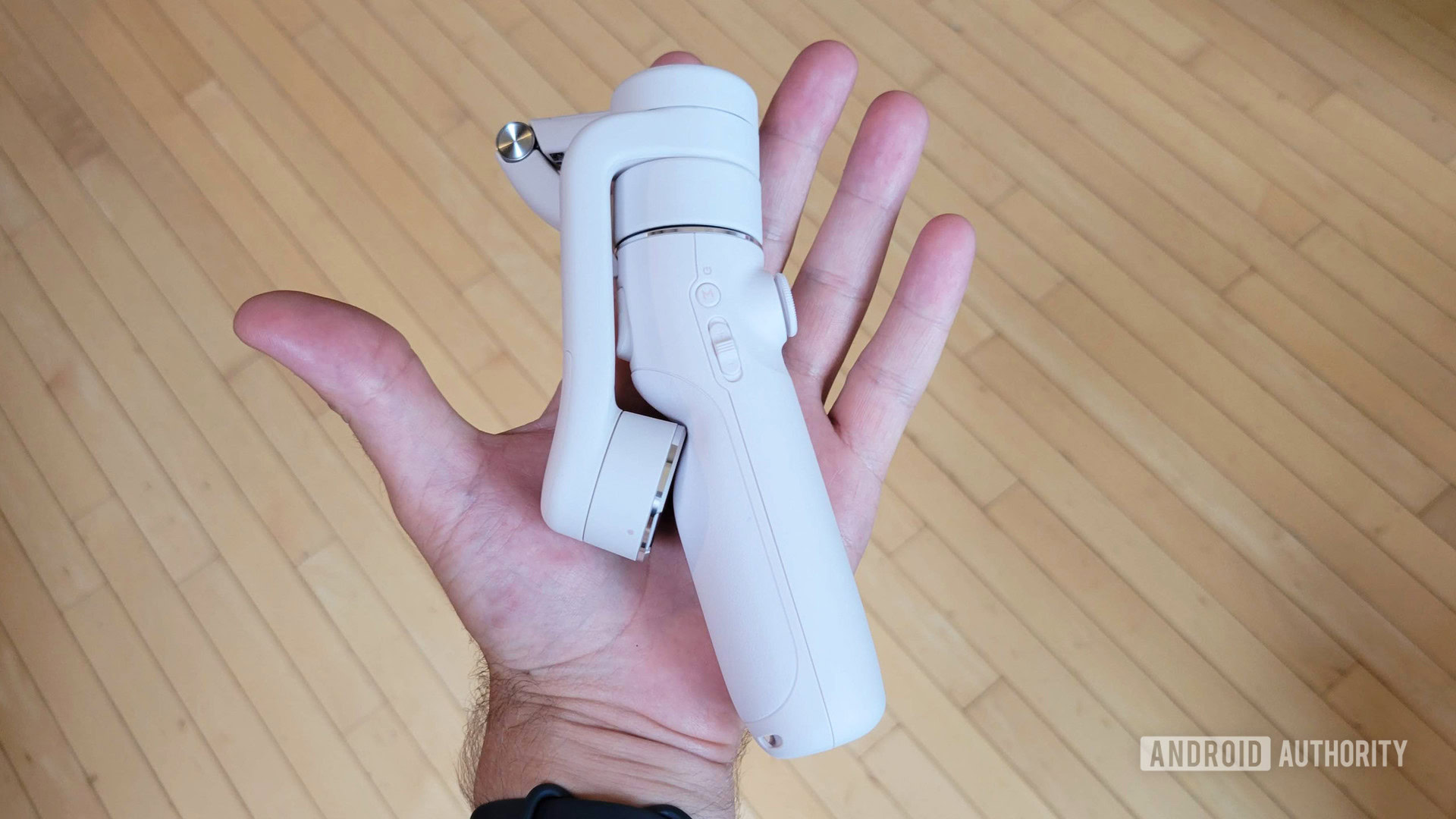
I have long been a proponent of gimbals that travel well, which is why I’m such a huge fan of the DJI Pocket 2 (which is a self-contained three-axis stabilizer with no smartphone needed). The OM 5 is very small and very light, making it now one of the best smartphone gimbals out there for people who hike, do one-bag travel, or just don’t want the usual bulk of a typical gimbal. In fact, the OM 5 is only slightly larger than the Pocket 2 when folded (see further down for a photo comparison).
However, there are some trade-offs for the new reduced size. The new folding arm is not easy to unfold. You need to pull pretty hard to dislodge the mounting plate from its tucked position, which makes you feel like you’re going to break it. When unfolded, the length of the arm is a lot shorter than we’ve seen on past devices, which could create a learning curve for folks used to shooting with “normal” arms. As with the last two models, the design also prohibits the use of “flashlight mode,” in which you hold the device completely horizontally like a flashlight (we last saw the feature on the Osmo 2).
The rest of the design elements stay the same as previous gimbals. There’s a standard tripod mount on the bottom, a rear trigger, a thumbstick, and all the usual buttons and sliders.
Overall, the DJI OM 5 feels like a premium device with a slightly clunky unfolding system. Despite its new size and weight, it doesn’t feel like a toy, which can be a problem with other gimbals we’ve tried, such as the Zhiyun Smooth XS.
Has the DJI OM 5 mounting system improved?
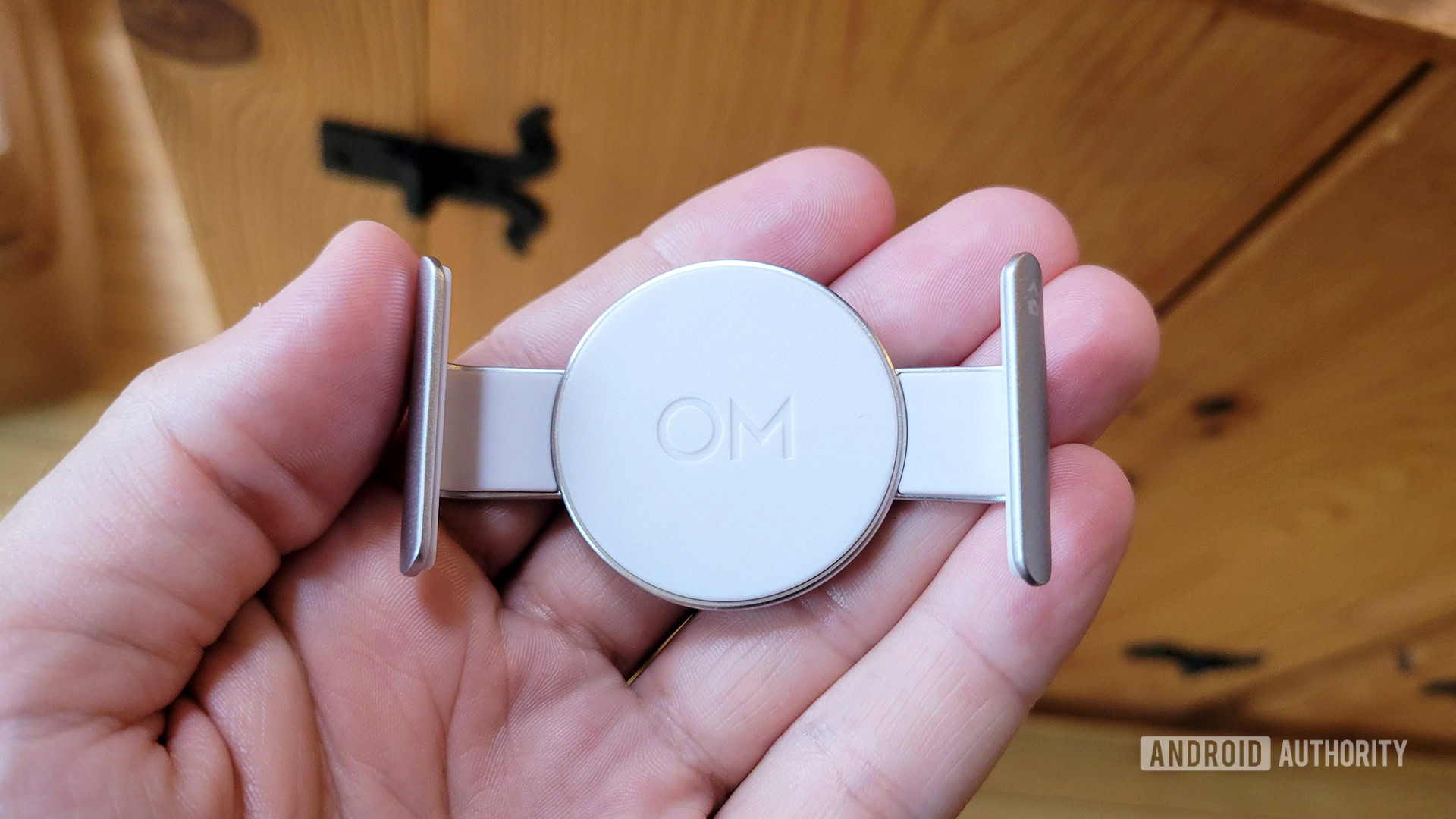
With 2020’s OM 4, DJI introduced a magnetic mounting system to its gimbals. The same system is on the OM 5, but with one major exception: the system does not include the mount that you permanently stick to the back of your smartphone. This was a smart move, as that type of mount was just an all-around bad idea.
Now, your only out-of-the-box option for mounting your phone is to use the included magnetic clamp (shown above). You clamp it around the sides of your phone and then snap the clamp onto the magnetic plate at the end of the gimbal’s arm. Since the clamp goes back to the exact same spot every time you remove it, you’ll only need to calibrate the gimbal once per shoot, which is a huge time-saver.
The DJI OM 5 clamp can accommodate thicker devices, preventing you from needing to remove your phone from its case.
The clamp itself has been redesigned to accommodate thicker and heavier phones. This should allow you to use the clamp even when your phone is in a case — something the DJI OM 4 clamp made difficult. I used the clamp with the enormous and heavy Galaxy Note 20 Ultra, and it had no problem with it. I used the phone without a case, but there was plenty of room left in the clamp, so I am confident a standard-sized case would have worked fine. Mega-thick rugged cases could present some problems, though.
Don’t forget there is also an optional clamp accessory called the Light Clamp that includes a key light built right in. This is an expensive add-on at $59, but in my experience, it worked great. The light is basic but bright and even has a few different color tones. If you use your gimbal often for selfie-style videos, not needing a separate key light might make the price worth it.
What are the new DJI Mimo software features?
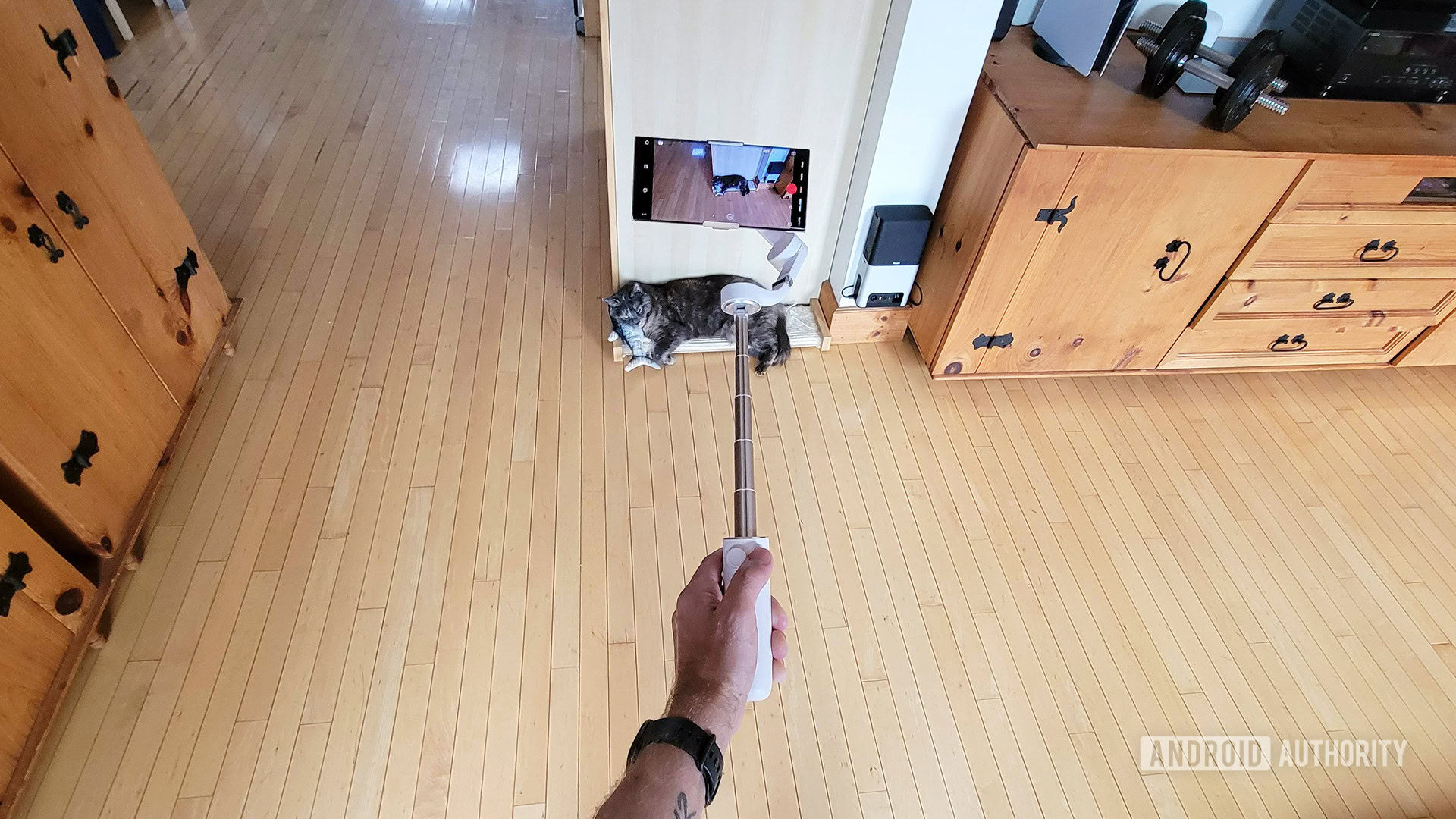
For this review, DJI gave us a beta version of the Android DJI Mimo app. Even though it’s a beta, there weren’t too many changes to the layout and interface of the app.
The software features you’ve come to expect from DJI are all here. That includes:
- Timelapse: Your phone sits in a stationary position and records footage for a set period of time. When finished, the software speeds up the footage to create a fast-paced edit.
- Hyperlapse: A timelapse shot that adds extra flair by moving the camera from one point to another very slowly while recording.
- Panorama: The camera takes photos while it moves from one point to another automatically and then pieces the photos together to make one extra-wide photo. A “Clone Me” option within this feature also allows you to digitally add yourself to various spots within the final photo.
- Story Mode: The software instructs you on how to record three or four different shots. You shoot those shots, and then the app edits them all together into a professional-looking video complete with music and even title cards. This is an easy way for anyone to create stunning social media videos without any video editing expertise.
- Dyna-Zoom: While you physically move backward, the zoom on your camera zooms in at a similar pace. This creates a slightly disorienting shot that is used for dramatic effect in TV and movies.
There are also two updates to the Mimo app: the updated Active Track 4.0 and the brand new Shot Guides.
Active Track 4.0
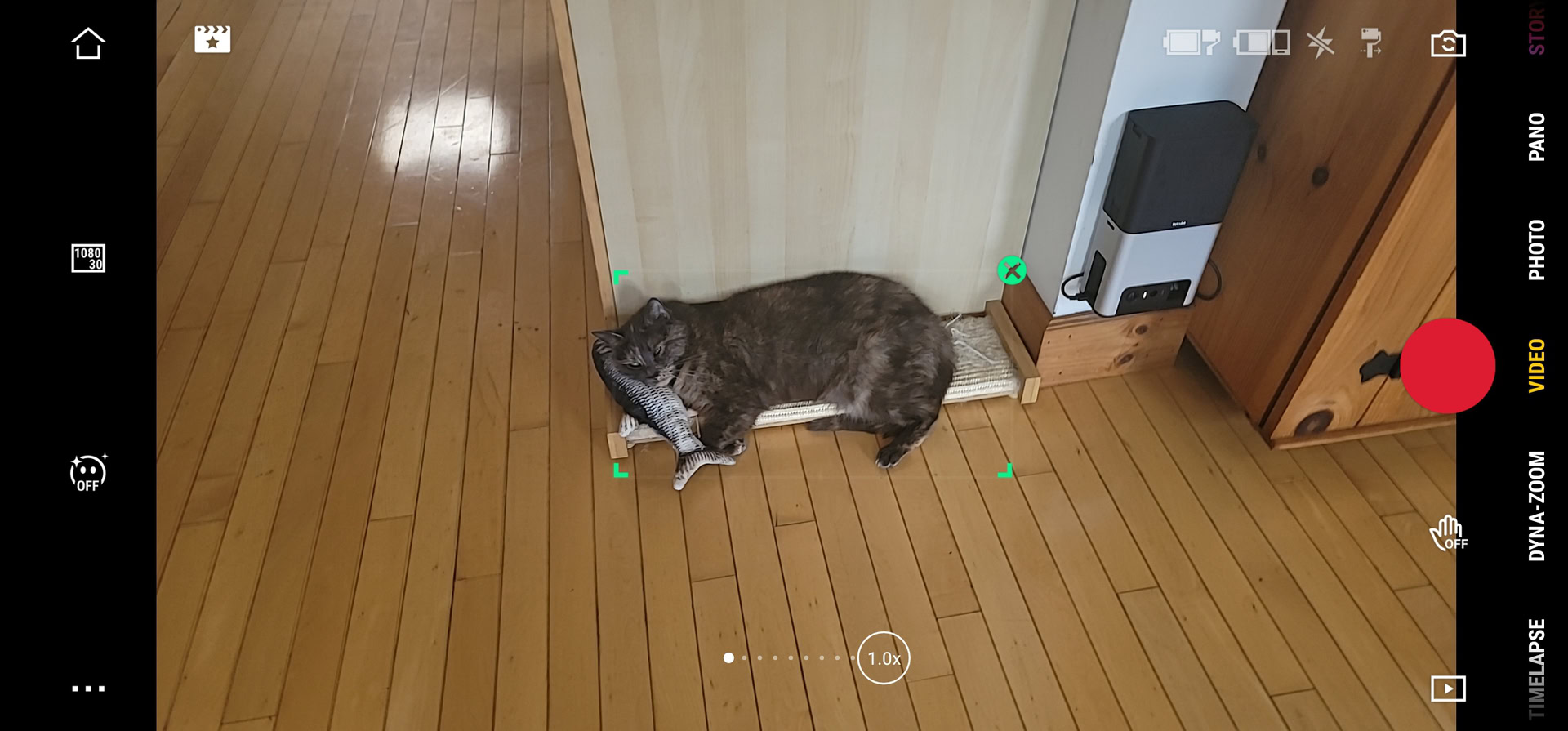
Active Track is DJI’s proprietary software system that allows you to auto-track a subject. Using the viewfinder, you highlight a subject you’d like to follow, such as a person, an animal, or even a stationary object. Once highlighted, the gimbal will follow that subject automatically, keeping it centered the entire time. This works even if you, the subject, or both are in motion.
As the “4.0” in the title suggests, there’s nothing fundamentally new here; it’s just better at doing its job. Sure enough, I found this new Active Track system to be better at tracking things, especially when they are not large in the frame. It’s also better at keeping track of fast-moving subjects, which will be helpful for tracking things like kids and dogs.
However, it’s still not perfect. If your subject is too small or too fast, the gimbal won’t track it accurately. It is nice, though, to see DJI constantly improving this useful feature.
Shot Guides
At first glance, Shot Guides might make you think it’s a replacement for Story Mode. However, that is not the case. Story Mode is still here and works as it has in previous iterations, albeit with a few more story templates to work with.
Shot Guides is a feature that instructs you on achieving a certain type of shot. It shows you an example shot on the left side of the screen and gives you basic instructions on how to do it. Using the viewfinder on the right side of the screen, you can craft your shot, doing your best to mimic the example.
Once you’ve finished, the Mimo app will show the example shot and the shot you created side-by-side. If you’re not happy with what you got, you can try again.
This is all well and good, but hardly revolutionary, right? Well, the real kicker here is that DJI uses AI to figure out where you are and then suggests shots that apply to your situation. For example, if you’re in a city at night, it will give you shot suggestions for that environment. Likewise, it will suggest different shots if you’re at a park, at the beach, etc.
Obviously, you can pick and choose any of the shots you’d want to try, regardless of where you might be at the time. But the fact that it auto-organizes the suggestions for you based on location is pretty cool. I tried this out in a park, and sure enough, the first shots it suggested to me were related to parks and greenery.
As I said, this won’t replace Story Mode and isn’t as useful for people who just want a quick-and-easy way to create social media content. But for those folks who are budding filmmakers or want to start leaving Story Mode behind to craft their own edits, this is a very useful tool.
Anything else?
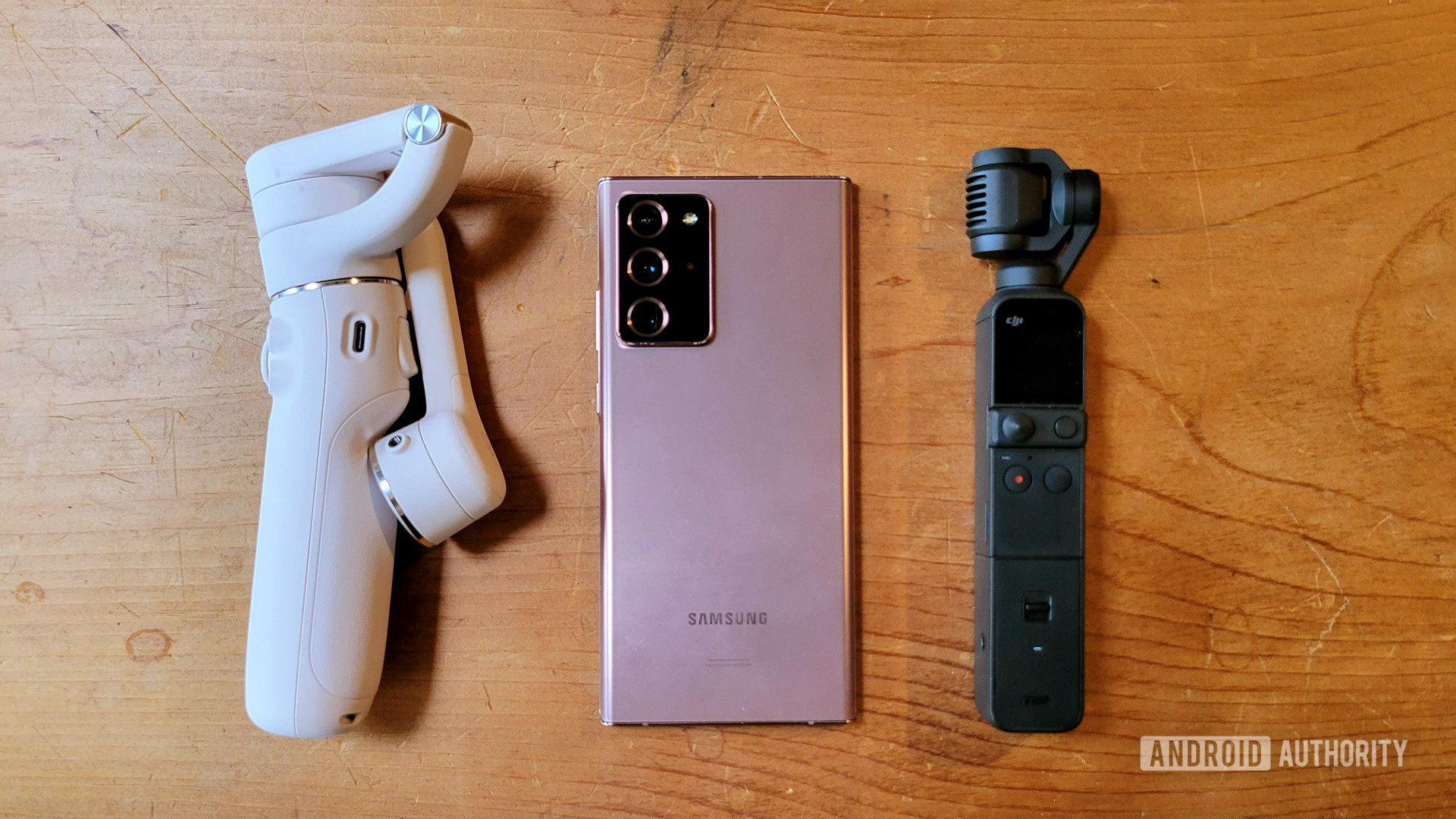
- Battery life: I found battery life to be in line with DJI’s claims, which is about six hours. You can check how much battery life you have left at any time within the Mimo app. However, the three LED dots on the front of the gimbal will also give you an estimate of how your battery is doing without needing to check the app.
- Charging: It takes about 90 minutes to charge the DJI OM 5. It uses USB-C connections and comes with a cable, but does not come with a wall adapter.
- Video quality: Within the Mimo app, you can choose your video quality. If your phone supports it, you can go as high as a 4K resolution. However, whether you go 4K, 1080p, or 720p, you can only shoot at 30fps on Android. Hopefully, DJI brings 24fps, 60fps, and other options here.
- Native camera app: In the promotional materials DJI gave us, it said you can use the gimbal with your phone’s native camera app. This would allow you to bypass DJI Mimo and use the app that comes with your phone. However, this only works on iPhones.
- Small phones: Inside the box is a soft sticker that slightly elevates the back of the magnetic clamp. This is ideal for smaller phones that might not work well with the clamp as it is out of the box. Do note that the sticker sticks to the clamp itself — you do not need to stick it to your phone.
- Tripod mount: There is a tripod stand included in the box. It’s the same color as the gimbal and gives you an easy way to prop up the device. However, if you want to use the gimbal on your own tripod, the mount is of the standard 0.25in size, so it should fit pretty much any tripod.
Value and competition


The DJI OM 5 is expensive. Period. When you look at the smartphone gimbal market, you can find plenty of other products that offer similar functionality at a significantly lower price.
Obviously, the newer DJI Osmo Mobile 6 ($159) should be at the top of your list. It offers all the features of the OM 5 but throws in some new controls and new Mimo tricks. To sweeten the deal, it has the same MSRP as the OM 5.
Meanwhile, the DJI OM 4 SE ($99) is now old hat, which gives it a lower price. For $60 less, you get the same magnetic mounting system, the same DJI Mimo software, and a gimbal that folds up for easy transport. It will be bigger and heavier, and won’t have the extendable arm, though.
You don't need to spend $159 to get a great smartphone gimbal these days.
Meanwhile, the ZHIYUN Smooth 4 has been our go-to choice for smartphone gimbals as of late. However, you’ll lose out on almost all the star features of the OM 5, such as the magnetic clamp, foldability, and extension arm. Still, if you just need a basic device to capture some smooth video footage, the Smooth 4 is the best value pick.
If you want to go even lower, you can get the ZHIYUN Smooth XS ($40). You’ll lose three-axis stabilization here, but you’ll get an even smaller size and lower weight, and you won’t need to sacrifice the extendable arm.
The big advantage DJI has over competitors, though, is the DJI Mimo app. Its feature set and polish outshine most other systems, making it one of the top choices for people who take capturing smartphone video footage very seriously.
DJI OM 5 review: The verdict
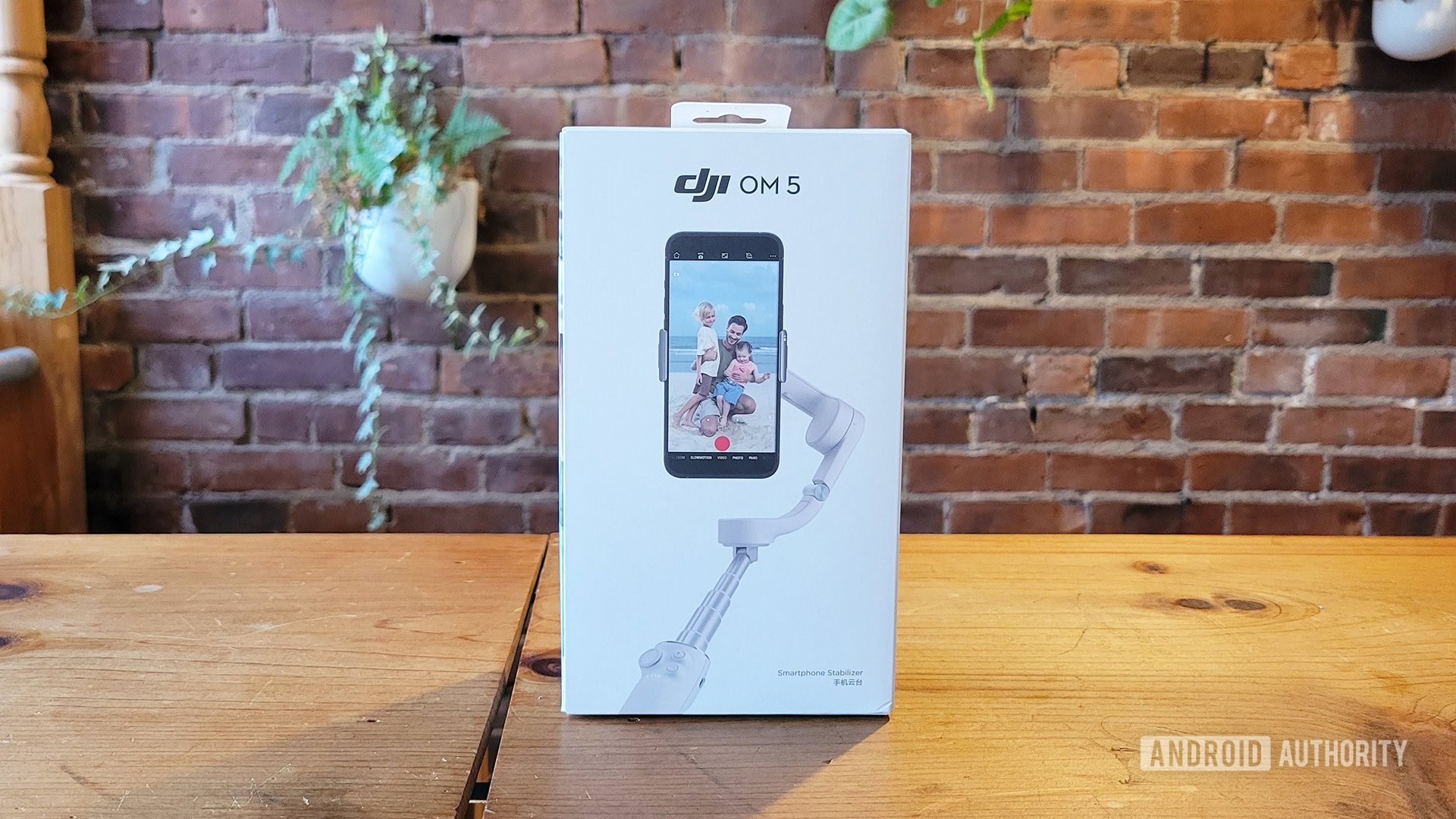
With the Osmo Mobile 3, DJI essentially added a folding arm to the Osmo Mobile 2. With the OM 4, DJI essentially added a magnetic mount system to the Osmo Mobile 3. Now, with the DJI OM 5, the company is not only redesigning how it folds to make it smaller and lighter, but also introducing an extendable arm. This makes the OM 5 a pretty big leap forward for the line.
If you’re like me and prize ease of transport when it comes to gimbals, you’re going to truly appreciate the change in size and weight with the OM 5. Likewise, if you own a gimbal and a selfie stick for different functions, you’ll appreciate being able to merge them into one device.
The DJI OM 5 is a great gimbal with a high degree of versatility, but you'll pay handsomely for it.
The two big problems, though, are the new folding arm and the device’s value. The folding arm is terrific at making the gimbal smaller, but the way it unfolds is not intuitive. Even once I got the hang of it, it still made me uncomfortable twisting the arm and pushing on it to dislodge it from its resting slot.
Finally, this bad boy ain’t cheap, which will be a huge deterrent for potential buyers. Considering you can get decent gimbals for under $100 nowadays, asking $159 for this seems a bit much. When you throw in the optional (but very useful) Light Clamp, you’re spending $218 for this kit. That’s a huge ask, even with DJI’s lead in the industry. You’ll just need to decide if you’re ready to spend that much for what is one of the best smartphone gimbals to ever hit the market.